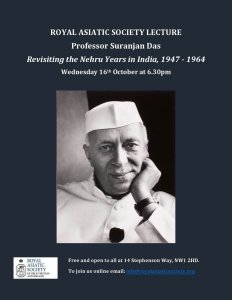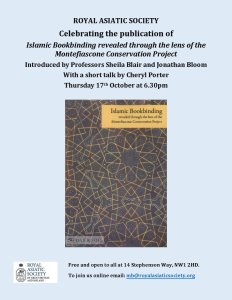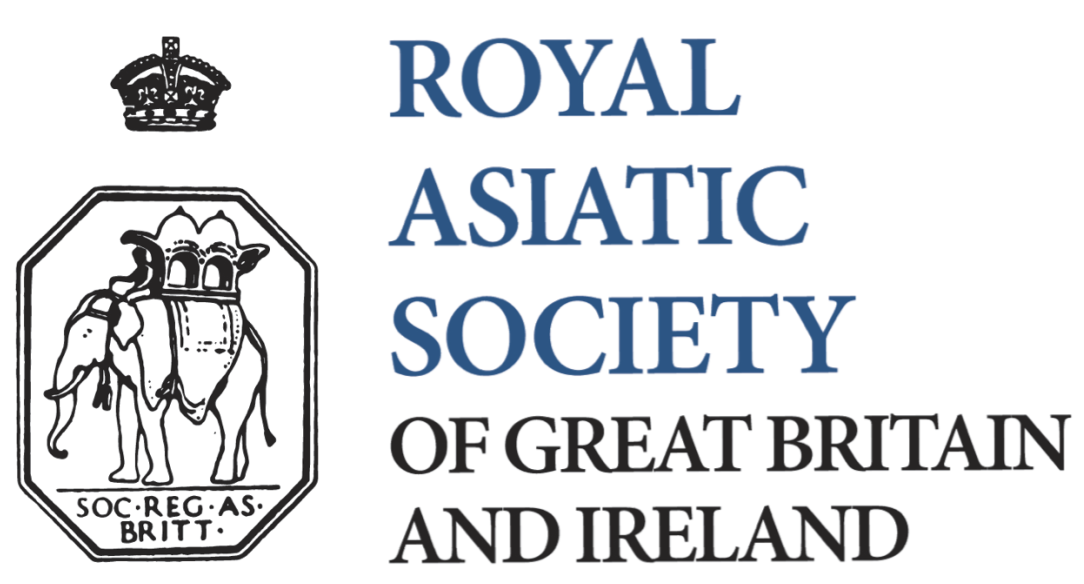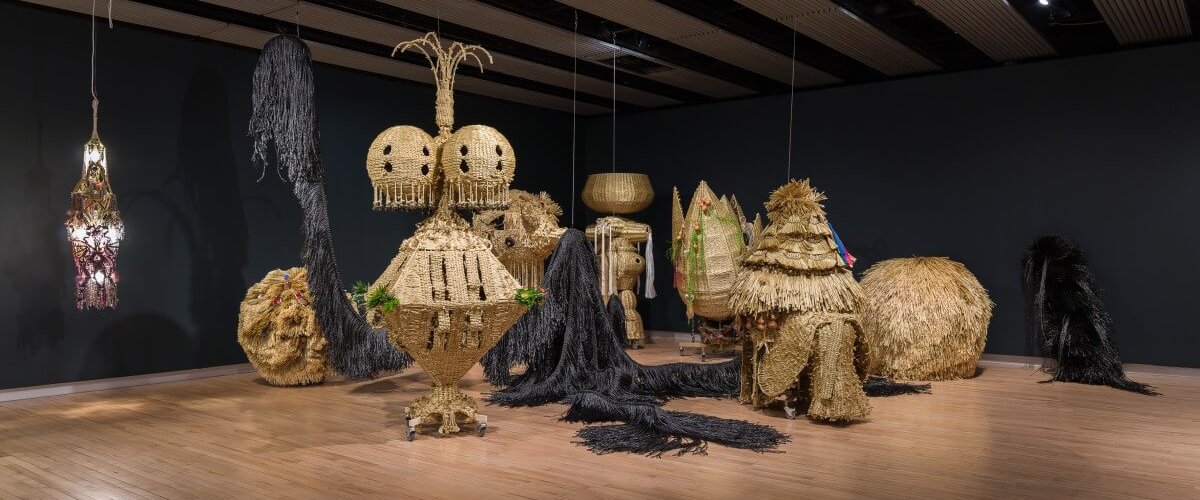Haegue Yang: Leap Year
This week, members of the staff at the Royal Asiatic Society were invited to the press view of the latest exhibition at the Hayward Gallery, Southbank, London. So instead of our usual occupations of being absorbed by Asian history or the Society’s administration, we spent a morning viewing the current work of Korean artist, Haegue Yang. Her Leap Year exhibition opened on the 9th October and will run until 5 January 2025 and gives a good insight into both her working practices and the issues that confront and challenge her to make her art.
Here is what the Hayward have to say about it:
‘Hayward Gallery presents Haegue Yang: Leap Year (9 October 2024 – 5 January 2025), is the first major UK survey of this internationally celebrated artist. Considered to be one of the leading artistic voices of her generation, Yang’s work is both spellbinding and boundary-pushing, probing into contemporary ideas of cross-cultural pollination, modernism and folk traditions, and personal and political histories. Leap Year illuminates Yang’s multifaceted, interdisciplinary and highly inventive practice from 1995 to today, echoing the Hayward Gallery’s mission, as part of the creative engine of the Southbank Centre, to champion artists from across the world whose ideas challenge and spark new ways of thinking.
Arranged into five thematic zones, the exhibition includes three major new commissions and several new productions which creates a captivating visual and sensory experience through installation, sculpture, collage, text, video, wallpaper and sound. Yang’s artwork often transforms everyday domestic items and industrial objects, from drying racks and light bulbs to nylon pom-poms and hand-knitted yarn, into distinctive sculptures and multimedia installations that engage the senses. Leap Year features key works from some of her most notable series including Light Sculptures, Sonic Sculptures, The Intermediates, Dress Vehicles, Mesmerizing Mesh and theVenetian blind installations.
Newly commissioned Sonic Droplets in Gradation – Water Veil (2024) is part of Yang’s ongoing Sonic Sculptures (2013 – ) series. Visitors are invited to walk through a curtain of blue and silver stainless-steel bells which trigger sonic reverberations, signalling their arrival. The materiality of the work is steeped in layers of references, from East Asian traditions and folklore to modernism, contemporary art history and nature, and acts as a physical gateway into an artistic world imagined by Yang.
Modular structures, geometries and movements are some of the main considerations in Yang’s practice. Sonic Dress Vehicle – Hulky Head (2018) and Sol LeWitt Vehicle – 6 Unit Cube on Cube without a Cube (2018) are two large sculptures adorned with bells, macramé surfaces or blinds. These artworks will be activated intermittently during the exhibition’s run; pushed and pulled on a floor vinyl that is inspired by meteorological charts.

Courtesy the artist and the Hayward Gallery.
Yang’s recent work investigates the relationship between matter and spirituality. Working with mulberry paper, Yang explores the use of this material in ancient belief systems and practices. In her series of collages, Mesmerizing Mesh (2021 – ), the artwork references sacred and ritualistic paper objects related to shamanism and folk or pagan traditions, while The Intermediates (2015 – ) features hybrid ‘creature-like’ sculptures made from artificial straw that draws from global weaving techniques.
The exhibition also re-presents and reimagines Sadong 30 (2006) after 18 years. This project was set in Yang’s unoccupied family home for 8 years outside Seoul. Carrying the house’s address as the project title, Sadong 30 was the artist’s first solo show in her home country. It was also regarded as her most profound breakthrough, leading to many of her future artistic developments.
Leap Year also features reflections on domesticity, intimacy and everyday gestures and objects. Series of Vulnerable Arrangements – Version Utrecht (2006) is Yang’s first and seminal work made with Venetian blinds, which has become one of her most iconic and recognisable mediums. Yang is drawn to Venetian blinds for their obliqueness, semi-transparent quality, and their capacity to divide and configure a space.
Leap Year concludes with an ambitious new commission of a large-scale Venetian blind installation, Star-Crossed Rendezvous after Yun (2024). This work features ascending layers of Venetian blinds in varying formations and colours that guide visitors through the space, alongside two breathing stage lights and a historic musical score. Yang’s work often highlights underrepresented, even obscured, yet pioneering and referential figures of modernism. This new artwork was inspired by Double Concerto (1977), created by the late Korean composer and political dissident Isang Yun (1917-1995). Other 20th-century figures appearing in her oeuvre include Marguerite Duras, Sol LeWitt, Sophie Taeuber-Arp, Félix González-Torres and Yves Klein, amongst others.

Haegue Yang says: “My artworks often have very long names with seemingly odd combinations of words that are hard even for me to memorise, whereas my exhibition titles are much simpler. This naming tradition mirrors my relationship to art-making versus exhibition-making. Art making is like weaving together a piece of complex, and therefore impossible to unweave, fabric, while exhibition making is like tailoring it into something comfortable to wear. Both acts are eager attempts towards perfection. For this survey show, I deliberately unfocused my eyes to obtain the hidden 3D vision of my own practice, which is a rare, perfect occurrence like a leap year.”
Ralph Rugoff, Director of the Hayward Gallery, says: “The Southbank Centre is committed to sparking new ways of thinking and experiencing art, and in line with that mission the Hayward Gallery is delighted to present a solo survey exhibition devoted to Haegue Yang’s extraordinarily inventive work from the past two decades. Yang is one of the world’s most pioneering artists and consistently pushes the boundaries of what an artwork can be and how it is presented with true imagination and creativity.”
Yung Ma, Senior Curator of the Hayward Gallery, says: “Haegue Yang has consistently sought to expand our perception of what it means to be culturally fluid or socio-politically engaged artistically, creating series after series of works that are at once sensual, expressive and captivating. Leap Year strives to be a true reflection of Yang’s vision, weaving together disparate threads that juxtapose histories of recent and ancient pasts with personal experiences and the contemporary condition to give visitors a deeply sensitive, engaging and enthralling experience.”
Haegue Yang: Leap Year is curated by Hayward Gallery Senior Curator Yung Ma with Assistant Curator Suzanna Petot and Curatorial Assistant Charlotte Dos Santos. The exhibition will travel to Kunsthal Rotterdam (1 March – 31 August 2025) and Migros Museum für Gegenwartskunst, Zürich (27 September 2025 – 19 January 2026).
The exhibition is generously supported by the Samsung Foundation of Culture. We are also grateful for the key support from Korea Foundation, Kukje Art and Culture Foundation and the Exhibition Supporters’ Group: Galerie Chantel Crousel; kurimanzutto, Mexico City / New York; Wendy Lee; Eleanor and Francis Shen; Jenny Yeh, Winsing Arts Foundation; Galerie Barbara Wien, Berlin. Additional support has also been provided by the Yang Won Sun Foundation, Institut für Auslandsbeziehungen (ifa) and the Goethe-Institut London.’
Alongside Yang’s exhibition The Hayward Gallery also present Waves by the Taiwanese artist Huang Po-Chih in which he uses the personal narratives of workers to investigate globalised trade, with a focus on the textile industry in East Asia. This exhibition is in the Hayward Gallery’s HENI Project Space and runs concurrent with Haegue Yang’s Leap Year.
Enjoying undertaking craftwork myself, I particularly enjoyed Yang’s woven sculptures and her vegetable prints and I was intrigued when the museum staff choreographed the movements of the artworks across the patterned floor. We are grateful to the Hayward Gallery for allowing access to the exhibition and hope that many of you will take the opportunity to see the works while they are in the UK.
(Featured picture is an Installation view of Haegue Yang: Leap Year, 2024. Photo: Mark Blower. Courtesy the artist and the Hayward Gallery.)
~ ~ ~ ~ ~
Next week, on Wednesday 16 October, 6.30pm, the Society will welcome Professor Suranjan Das, currently Vice-Chancellor of Adamas University, Kolkata, to lecture on Revisiting the Nehru Years in India, 1947 – 1964. This lecture reviews the Nehruvian legacy in constructing a postindependent India. It will argue that certain contemporary constraints prevented Nehru from becoming as progressive or as socialist as he could have been or even wanted to be, resulting in significant gaps between what Nehru expounded and what constituted the ground reality. The lecture will contend that the basic inadequacy in the Nehruvian style of governance lay not in a faulty vision, but in Nehru’s inability to create new institutions to implement the programme of national development and social change. This dysfunctionality was linked to a structural factor, connected as it was to an imperfect Transfer of Power on the 15th of August 1947.

And on Thursday 17th October, 6.30 pm, we will welcome Professors Sheila Blair and Jonathan Bloom, and conservator Cheryl Porter as they celebrate the publication of Islamic Bookbinding revealed through the lens of the Montefiascone Conservation Project. Our Director, Dr Alison Ohta, has also been involved in this project over many years and has contributed to the publication. We look forward to helping celebrate their achievements.

Nancy Charley, 11 October 2024.

